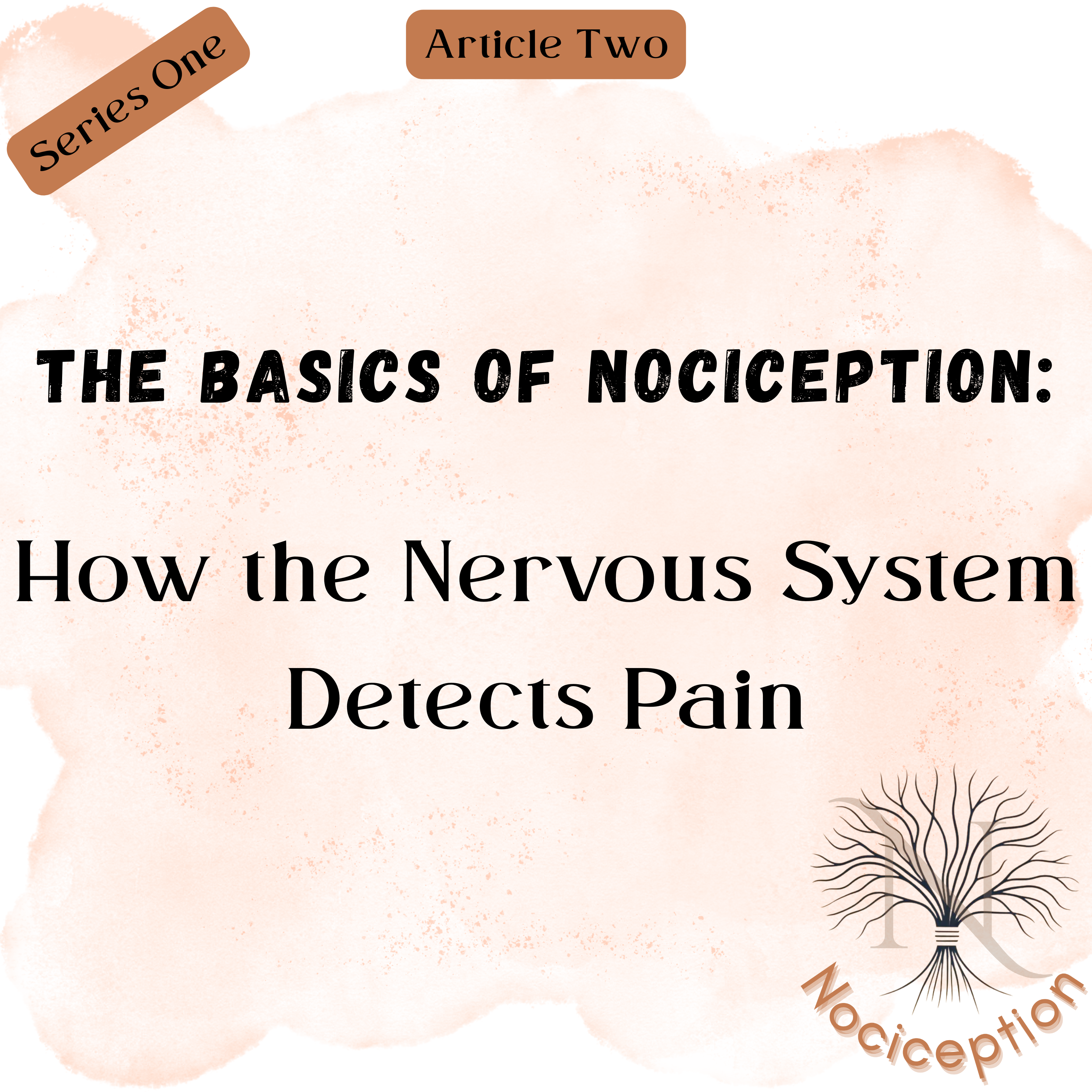Understanding how the nervous system detects pain is key to grasping how nociception works. Let’s look into the mechanisms that make pain signals possible, from receptors in the body to processing in the brain. Along the way, we’ll also link how these processes relate to both acute and chronic pain. Let’s get started!
As always – make smart choices and do not base them purely an article on the internet no matter how well researched it may be – disclaimer in the side bar.
Understanding the Nervous System’s Role in Pain Detection
The nervous system is like a sophisticated communication network within the body. At its core, it’s responsible for detecting environmental changes, processing that information, and sending out appropriate responses. When it comes to pain, nociceptors—the specialized sensors in the body—play a critical role in detecting potentially harmful stimuli. These nociceptors are scattered throughout the skin, organs, and muscles, ready to sound the alarm when they detect something dangerous, like a cut, burn, or extreme temperature.
Once nociceptors are activated, they send electrical signals through sensory nerve fibers to the spinal cord, which acts as the central hub for processing these signals. From there, pain signals are sent up to the brain, where the body experiences what we recognize as pain. In this section, we’ll explore how these signals travel from nociceptors to the brain, starting with the activation of nociceptors themselves.
For more on the basics of nociception, check out What Is Nociception? An Overview of Pain Signaling. You’ll get a clearer picture of how these mechanisms fit together.

The Pathway of Pain Detection: From Receptor Activation to Brain Processing
Pain detection doesn’t happen all at once. It’s a process that takes time, with multiple steps involved. After nociceptors in the body are activated by harmful stimuli, the signals travel along A-delta or C fibers (types of nerve fibers that handle pain). These fibers transmit the pain signals to the spinal cord, where the body decides how urgent the situation is.
The spinal cord plays a pivotal role, not just in relaying signals, but also in modulating pain. This means that the spinal cord can amplify or dampen pain signals before they even reach the brain. It’s like a traffic control system, where some signals may get “green lights,” while others get “red lights” to slow them down. The signals are then passed up to the brainstem, and from there, to the thalamus, which acts like a relay station for sensory signals. This is where the brain begins to interpret the severity of the pain and decide how to respond.
Finally, the brain processes the information and gives the body a sense of awareness and action. This complex system helps the body react appropriately, whether by moving away from the source of pain or by triggering protective responses like muscle spasms. Understanding how the nervous system detects pain helps explain why some pain feels immediate and sharp, while other types of pain, like chronic pain, may develop more gradually and be less predictable.
Want to learn more about how nociceptors are involved? Check out Nociceptors Explained: The Body’s Pain Sensors to get an in-depth look at these incredible sensors.
A Closer Look: The Role of Pain Pathways in Acute vs. Chronic Pain
The distinction between acute and chronic pain is crucial to understanding how pain works in the body. Acute pain is generally a short-term response to injury or a harmful stimulus, while chronic pain lingers long after the initial injury has healed. Why does this happen?
Acute pain is often the result of nociceptors signaling to the brain that something is wrong. In most cases, once the stimulus (like an injury) is removed, the pain stops. Chronic pain, on the other hand, is often the result of ongoing or altered pain signaling. This could be due to a malfunction in the nervous system, where pain pathways become more sensitive or hypersensitive over time. As a result, the body may interpret normal, non-harmful sensations as painful.
Understanding the difference between these types of pain is crucial in determining treatment strategies, whether it’s managing acute pain with immediate care or addressing chronic pain with long-term interventions.
Explore more on the difference between these two types of pain in The Role of Nociception in Acute vs. Chronic Pain. It’s key to understanding how nociception affects pain in different ways.
Let’s Sum It Up: How Nociception Works and Why It Matters
Pain is an essential protective mechanism, but how it’s detected and processed is far from simple. Nociceptors detect harmful stimuli, sending signals to the brain for interpretation. The pathways these signals travel through involve a series of complex, yet finely tuned systems designed to keep us safe. However, understanding how nociception works also allows us to identify when something might go wrong—whether it’s in chronic pain, injury, or nerve dysfunction.
Knowing the process of pain detection is essential for anyone struggling with ongoing pain. By recognizing how the nervous system processes pain, we can take informed steps toward managing and understanding it better.
The Basics of Nociception Series:
1) What Is Nociception? An Overview of Pain Signaling
2) How the Nervous System Detects Pain: Key Mechanisms (CURRENT ARTICLE)
3) Nociceptors Explained: The Body’s Pain Sensors
4) The Role of Nociception in Acute vs. Chronic Pain

No Responses